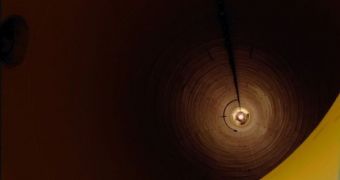The American space agency NASA has officially launched the WING contest, addressed to 6th- to 9th-grade students. The “What If No Gravity?” initiative plans to attract the high-school youth in designing and constructing experiments to be dropped in a NASA Microgravity Environment, or DIME. These so-called drop towers have the ability to simulate microgravity for short period of time, and officials at the agency say that they plan to make science interesting to as many children as possible, in the hope that more of them will take on exact sciences later on in their studies.
“To enter the competitions, teams must develop a concept for a microgravity experiment, and prepare and submit a proposal to NASA's Glenn Research Center, in Cleveland, by Monday, November 2. A panel of engineers and scientists at Glenn will evaluate and select the top-ranked proposals for both DIME and WING by December 10,” the space agency reveals in a press release accompanying the announcement. Details of the contest can be found here.
According to the rules of the competition, the admission is open to any child group, including science classes or clubs, groups of classes, scout troops or other similar organizations, under the condition that the young ones be accompanied by an adult supervisor, such as a teacher, a parent, or even a technical consultant. The top four finalists will get the chance to visit Glenn's 2.2-Second Drop Tower, and to run the experiments themselves. All DIME projects will be carried out in April 2010, and the results will be reviewed by a team of NASA experts.
“Several additional DIME teams and up to 50 WING teams will be invited to ship their experiments to Glenn to be drop-tested by NASA staff. These experiments and the resulting data will be returned to the teams so they can prepare reports about their findings. These and similar education programs help NASA attract and retain students in science, technology, engineering and mathematics – disciplines critical to the agency's future missions,” the report also shows.

 14 DAY TRIAL //
14 DAY TRIAL //